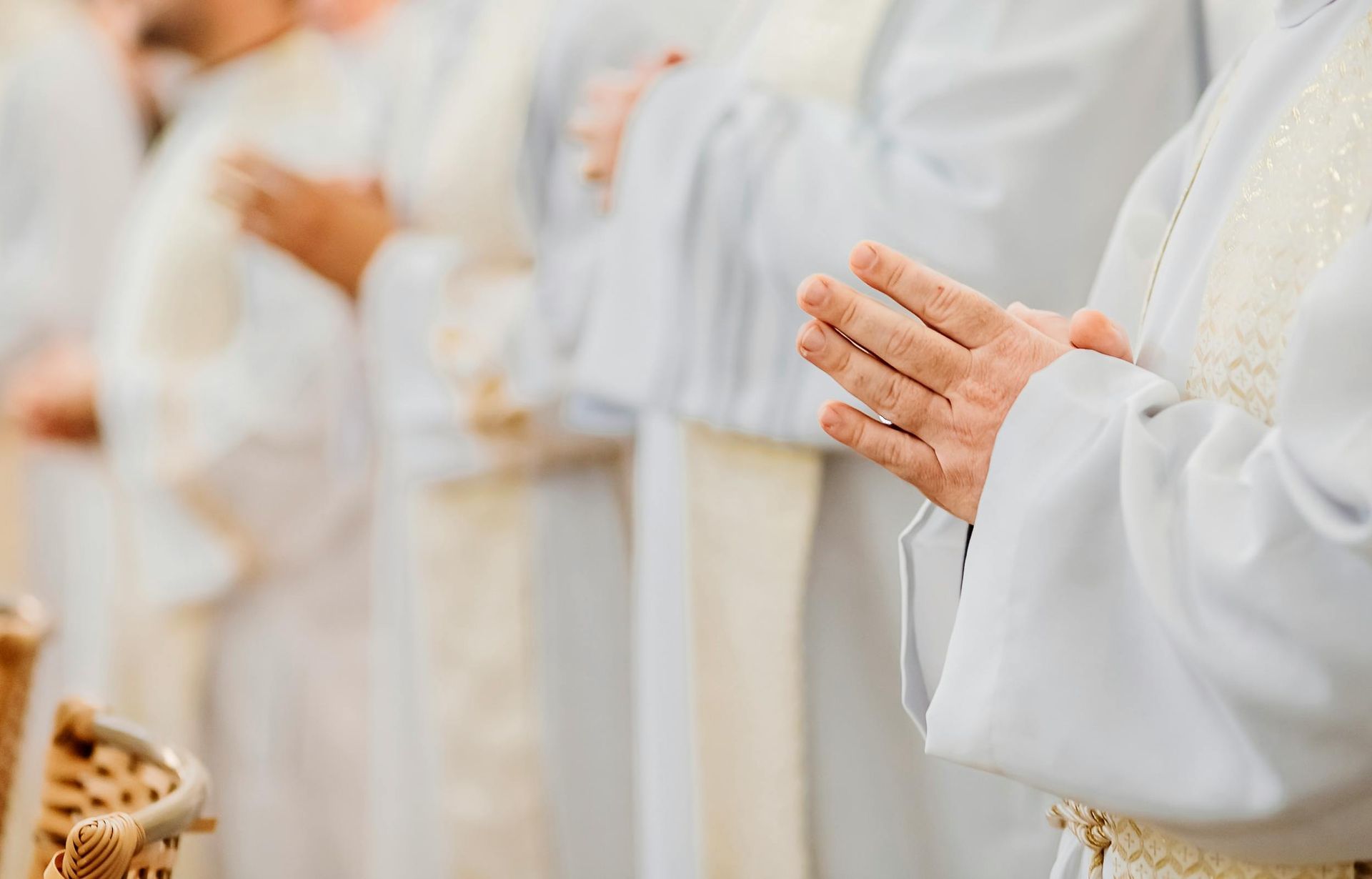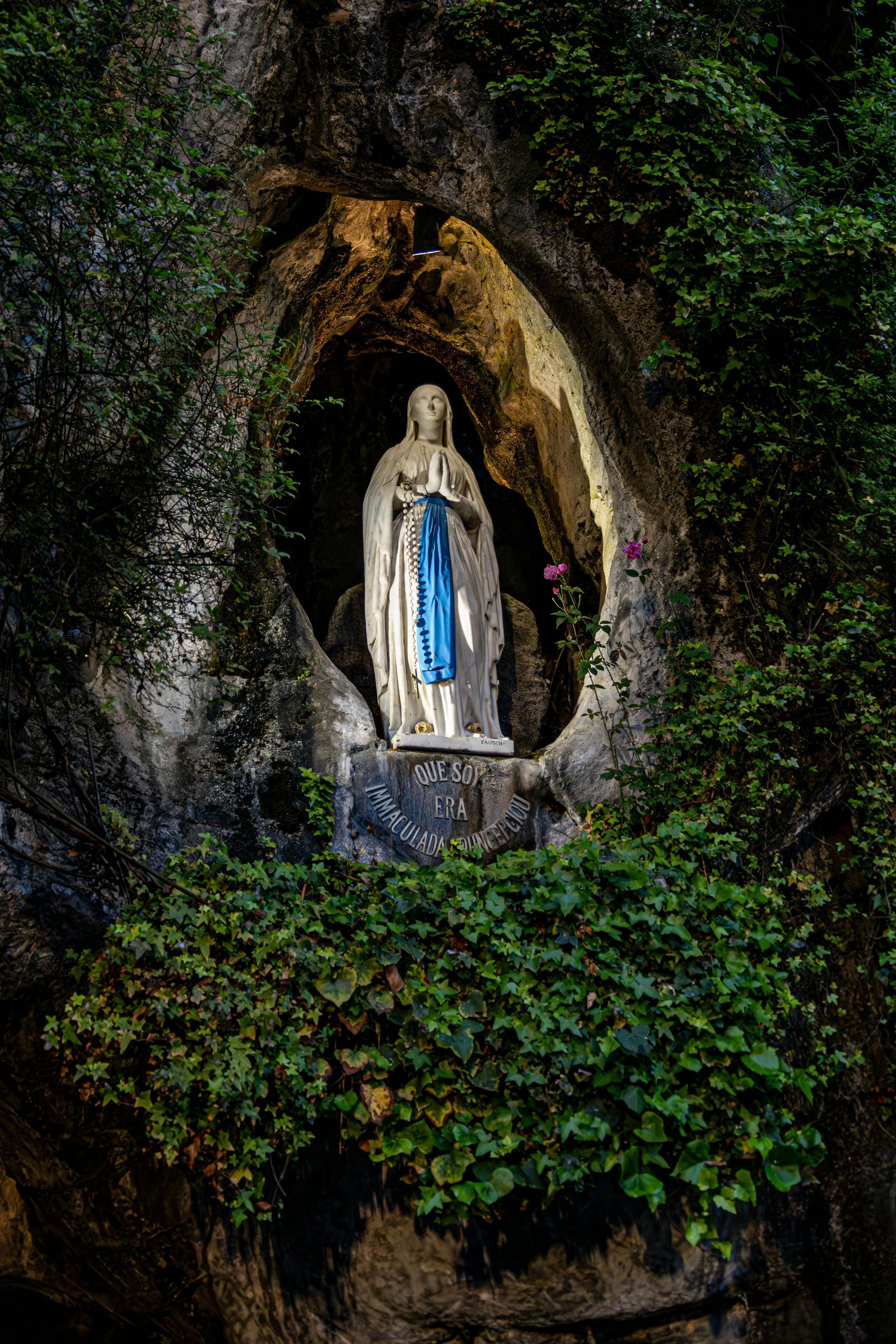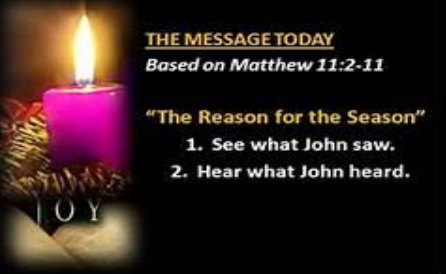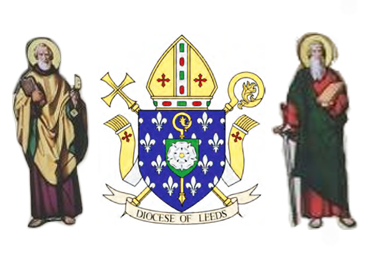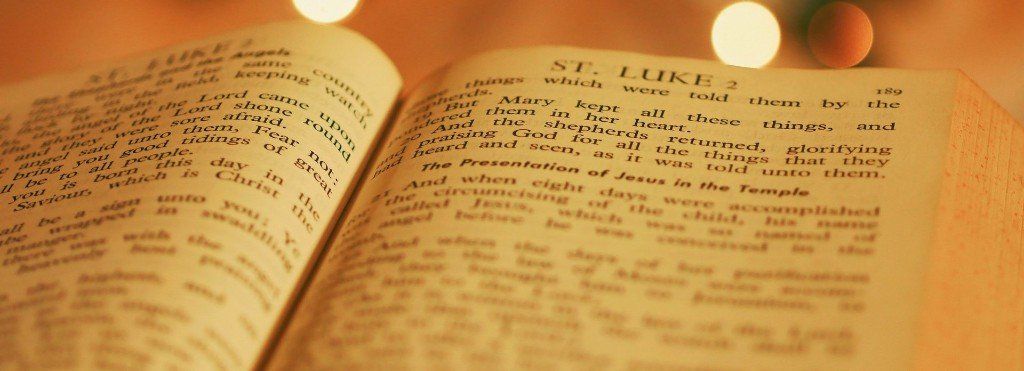This is a subtitle for your new post
The Feast of St Luke occurs on 18 October – why do we read the gospel that bears his name? Perhaps it is to make more sense of the readings we hear at Mass; to deepen our knowledge of our Christian faith; or to experience a masterpiece of world literature and to savour its narrative. Peter Edmonds SJ suggests a way for us to approach our encounter with Jesus and his story in Luke’s Gospel.
No matter what our reasons for reading the Gospel of Luke may be, our preparation begins by familiarising ourselves with its author. How might we do this?
We let Paul introduce Luke
One way is to allow Saint Paul to introduce the gospel’s author to us. Three times in letters attributed to him, Paul writes of a person called Luke whom Christian tradition has identified with the author of the gospel which bears this name, and of the Acts of the Apostles, which continues its narrative. The references are few and brief but we can use them to build up a picture of the sort of person Luke could have been. In the Letter to Philemon, the shortest of his letters, Paul refers to Luke as his ‘fellow worker’ (Philemon 1:24). In the Letter to the Colossians, he describes a companion called Luke as ‘the beloved physician’ (Colossians 4:14). In his Second Letter to Timothy, he reports that Luke is the only one to keep him company in his prison confinement (2 Timothy 4:11). From these verses, we may conclude that this Luke was an individual who embodied in himself the virtues of friendship and fellowship, hard work and perseverance, healing and compassion – qualities we look for in a saint. Additionally, as author of the Acts of the Apostles, Luke seems to refer to himself as one who accompanied Paul in his missionary travels. He writes for example: ‘When he had seen the vision, we immediately tried to cross over to Macedonia. . . We set sail from Troas. . . One day as we were going to the place of prayer. . .’ (Acts 16:10-17 – emphases added).
We let Luke introduce himself (Luke 1:1-4)
Luke is the only evangelist to begin his gospel with a personal message to the reader. In the Greek text, this is expressed in a single sentence, which is both eloquent in expression and ambitious in intent. We pick out three of the points he stresses. He dedicates his work to an individual named Theophilus. Here we recognise a writer anxious to establish a personal relationship with his reader. Was Theophilus a wealthy patron who had commissioned or sponsored the work? The name could mean ‘friend of God’ or ‘beloved of God’. It is a name to which everyone who reads or hears this gospel may lay a claim. It alerts us that this will be a gospel with a strong interest in personal relationships.
A second word to note in these opening verses is the word ‘orderly’. We must not be surprised to find events, narratives and teachings presented in a different order to that of other gospels. A third phrase explains why Luke is writing. He aims, in the words of the Jerusalem Bible translation, that ‘your Excellency may learn how well-founded the teaching is which you have received’. Here is the Lucan equivalent of the guarantee or warranty that we look for when we commit ourselves to some expensive expenditure. Yes, we have attended to all our instructions and know our doctrine; the story that Luke is going to relate to us will assure us of its truth, and give us courage and direction as we move forward on the radical Christian path we have chosen.
WE ENJOY LUKE’S STORY
In seeing Luke through the eyes of Paul and understanding his own introduction to the gospel, we ask ourselves what sort of gospel we are to expect. We are now ready to read it for ourselves. We join in spirit those who first heard it read centuries ago. They may have heard it in one sitting; perhaps they listened to it in instalments. If we choose to read it section by section, we follow the pattern established in Mark’s Gospel, which was a source Luke used. Mark related first the activity of Jesus in Galilee, then his journey to Jerusalem, and finally his time in Jerusalem which concluded with his suffering, death and resurrection. Luke adds to Mark’s structure two chapters on the infancy of Jesus and includes a much-expanded resurrection chapter. So we begin with his infancy story.
The Infancy Story (1:5-2:52)
We are to regard this infancy story as a prologue to the whole gospel rather than as an addition to the completed work. This infancy story is a mini-gospel in itself in so far as it discloses the identity of Jesus and offers us examples of true discipleship. For instance, we learn from the words of the angel to the shepherds who Jesus was; he was Saviour, Christ and Lord (2:11). Mary, the mother of Jesus, teaches us how to be a disciple when she says to Gabriel, ‘Be it done to me according to your word’ (1:38) and we meet also a procession of minor disciples, like Zechariah and Elizabeth before the birth of Jesus, the shepherds at his birth, and Simeon and Anna after it. They punctuate the story with their own prayers and canticles, which the Church continues to use and treasure. With Simeon, the Church concludes her day by reciting, ‘Now do you dismiss your servant in peace’ (2:29).
The Ministry of Jesus in Galilee (3:1-9:50)
Part of the genius of Luke was his ability to write stories within his story and these assist our understanding of his narrative as a whole. So instead of the two verse summary of Jesus’s initial preaching in Galilee which we find in Mark (Mark 1:14-15), Luke offers the drama of Jesus’s reading of Isaiah in the synagogue at Nazareth which culminated in an attempt to throw him off a cliff (4:16-30). Here is an example of how Luke orders his gospel; it is as if he is saying to us: ‘if you want to understand Jesus and his mission, this is where you must begin’. (Mark records the visit of Jesus to Nazareth much more briefly and much later in his ministry [Mark 6:1-6]). These verses provide us with another mini-gospel; we learn about the identity and message of Jesus, how he was rejected by his own people and how he escaped from his enemies, as he would do later when he rose from the dead. The ministry of Jesus in Galilee which Luke goes on to relate, is the ‘bringing the good news to the poor’ of which Isaiah spoke (Isaiah 61:1).
Luke does something similar in the next chapter. Mark narrated the call of the first disciples in four verses (Mark 1:16-20); Luke postpones this call and gives it in much greater detail (5:1-11). He sets the scene on the lake of Galilee and has Peter catching an enormous haul of fish. We can recognise from the way Luke gives his account a traditional pattern used in scripture to describe the call of a leader of God’s people: like Moses at the burning bush (Exodus 3:1-12) and Jeremiah at his call (Jeremiah 1:1-10), Peter has an experience of God, objects, is reassured and given a mission. Luke through this story-within-a-story teaches how a Christian vocation can be measured and understood by recognising such a structure. Here is the sort of reassurance which he promised in the opening of his gospel.
The Journey of Jesus to Jerusalem (9:51-19:44)
Mark devotes two chapters in his gospel to the journey of Jesus and his disciples to Jerusalem (Mark 8:27-10:52); Luke treats this journey over some ten chapters. He gives it a solemn beginning. ‘When the days came near for him to be taken up, he set his face to go to Jerusalem’ (9:51). This language puts us in mind of the ‘taking up’ to heaven of the prophet Elijah (2 Kings 2:11).
Jesus continues to play the role of a prophet and in his prophetic ministry he addresses three types of audience: he challenges the crowds to seize the opportunity that he was offering them in his ministry (14:25); he sets before his disciples the possible cost of their personal commitment to him (12:22); and he responds to his critics, often using parables whose meaning they had to struggle to grasp (15:3). Luke includes in this section much of the teaching of Jesus, some of which may be more familiar to us from Matthew who presents it in long discourses like the Sermon on the Mount (Matthew 5-7).
Jesus in Jerusalem (19:45-24:12)
This material falls into two blocks. The first describes how ‘every day Jesus was teaching in the temple’ (21:37) – Luke remarks how the common people were ‘spellbound by what they heard’ (19:48) and this is the spirit in which we should read this part of the gospel. The second is Luke’s account of the passion and death of Jesus. Before tackling this, we might pause to ask how we would expect Luke to relate this familiar story, in the light of what Paul wrote, of Luke’s own introduction and of what we have read so far in this gospel. Then with the women whom Luke mentions, as Jesus goes to his death, we can ‘stand at a distance watching these things’ (23:49). We should not be surprised to see Jesus continuing his ministry of healing and reconciliation; he heals the ear of the servant which had been cut off (22:51), he promises a place in paradise to the penitent thief (23:43), and Pilate and Herod become friends with one another (23:12).
The Risen Jesus (24:13-53)
Luke’s account of the two disciples on their way to Emmaus is the most profound and consoling resurrection story of all. It has special relevance to those of us who, despite our knowledge of the Christian story, find that our faith has cooled, because this was the situation of those two disciples whom Jesus met on the road; they could tell the story of Jesus right up to the discovery of the empty tomb, yet their hope lay in the past (24:19-24). Jesus uses three means to restore their hope and belief: he listened to them as he accompanied them on the road; he explained the scriptures to them; and he broke bread at table with them. Luke would be disappointed indeed if any of his readers were to say, ‘We had hoped’, because through his gospel story he has been teaching them how the Lord is always a personal presence, to be met with in the scriptures and the breaking of bread. The Church repeats this, explaining the scriptures and breaking the bread every time that she assembles for her Eucharist.
WE DRAW OUR PORTRAIT OF JESUS
A text always yields more if we ask questions of it. Moving from the story of the gospel, we now pay attention to its main character, Jesus. Each gospel portrays Jesus in its own way, just if we have four portraits of a person, each of them is true, but each brings out some special quality. Here we treat but one characteristic of the Lucan Jesus: we approach him as a model for imitation, as the first Christian who lives a life exemplary for Christian life in every age. We take four points.
A Christian is one who prays. The Jesus we meet in Luke, prays constantly (9:18) and at all the main points of his life, beginning with his baptism (3:21). By contrast, Mark only mentions the prayer of Jesus three times (Mark 1:35; 6:46; 14:39). Both Mark and Matthew report the Transfiguration of Jesus, but only Luke tells us that Jesus went up that mountain in order to pray (9:28). When Jesus prayed the night before his death, he urged his disciples to do the same (22:40,46). Like those disciples, we too are to pray that we may not enter into temptation.
A Christian is one who perseveres. The Christian life is a life to be lived in ‘patient endurance’, as Jesus taught when explaining the parable of the sower (8:15). Early in his ministry, ‘he continued proclaiming the message’ (4:44). Later, as he began his journey to Jerusalem, ‘he set his face to go there’ (9:51), and the word Jerusalem is repeated at key points as ‘as he made his way to Jerusalem’ (13:22). At prayer before he suffered, ‘he prayed more earnestly’ (22:44). In his final words to his disciples, he offers a reason for his perseverance: ‘Everything written about me in the law of Moses, in the prophets, and the psalms must be fulfilled’ (24:44).
A Christian is sensitive to the needs of others. Jesus introduced himself in Nazareth as one anointed ‘to bring good news to the poor’ (4:18). This mission continues throughout this gospel. The widow of Naim who had lost her only son, is but one example of the many afflicted people for whom he ‘had compassion’ during his Galilaean mission (7:13). During his journey to Jerusalem, he cured a woman crippled for eighteen years (13:11). Even as he carried his cross, he consoled the ‘daughters of Jerusalem’ who had come out to weep for him (23:28).
Finally, Jesus gives an example of a Christian death. His last words before his death were of forgiveness for those executing him. They ‘did not know what they were doing’ (23:34) and his final prayer expressed his union with his Father, ‘Father, into your hands I commend my spirit’ (23:46). Stephen, the first to die as a martyr in the Acts of the Apostles, was to imitate Jesus in forgiving his murderers and dying in union not with the Father but with Jesus whom he could see standing in glory at the right hand of God (Acts 7:59-60).
WE ADMIRE THE DISCIPLES
The inner circle
The people who occupy second place in the gospel after Jesus, are those whom Jesus called to be his disciples. The twelve whom Jesus named apostles (6:13), formed the most important group and Peter was their leader. We may list three areas in which Luke’s treatment of them is special compared with other gospels.
They were the object of Jesus’s concern and personal care. Before he called them, he passed a whole night in prayer and only then did he summon them (6:12). Before the crisis of the passion, Jesus knew that Satan had demanded ‘to sift all of them like wheat’, but Jesus had prayed for Peter, in particular that his faith should not fail (22:31-32). Once he had risen from the dead, Jesus appeared to Peter (24:34), but before informing us of this, Luke has written how Jesus himself had gone in search of two otherwise unknown disciples walking to Emmaus and transformed them so that they would be ambassadors of the resurrection to the eleven apostles (24:13-35).
Secondly, Luke is consistently kind to them, playing down their failures. Jesus does not accuse them, as he does in Mark, of having no faith when their boat runs into a storm (8:22). When Jesus cures the epileptic boy (9:42), he does not blame them for their lack of prayer as he does in Mark (9:29) or blame them for little faith as in Matthew (17:20). Their flight at his arrest, noted by Mark (14:50) and Matthew (26:56), is not mentioned. When Peter denied Jesus, Luke concludes, ‘The Lord turned and looked at Peter’ (22:61).
Thirdly, the disciples in Luke know what they need. Having seen Jesus at prayer, they ask, ‘Lord, teach us how to pray’ (11:1) and having heard Jesus’s teaching about forgiveness, they asked for an increase of faith (17:5). This again is in contrast to the other gospels in which, despite being aware of their weaknesses and even being rebuked for them by Jesus, they never ask for a remedy (Mark 8:17-18).
The outer circle
There are other disciples in Luke besides the inner circle of the Twelve. There are the seventy whom he sends out on mission who reported to him that in his name the demons submitted (10:1, 17).There are also people who appear on the gospel stage only once, whose words or actions we can imitate or admire. Some we recognise from Mark – these include figures like the woman with the haemorrhage (Mark 5:25; Luke 8:43) and Bartimaeus (Mark 10:46; Luke 18:35) – but Luke adds others to their number, like the chief tax collector Zacchaeus who welcomed Jesus into his house (19:2) and the penitent thief who was the only one on Calvary to witness to his innocence (23:40).
Luke’s Gospel is also special in that there are a gallery of figures for admiration and imitation in the parables of Jesus that we only find in this gospel. These include the good Samaritan whose response to human need is an inspiration to all who come face to face with human distress (10:33); the prodigal son whose repentance and return to his father is a model for every penitent (15:12); and the tax collector in the temple whose simple prayer is a fit petition to the merciful God to whom he makes it (18:10).
This approach to Luke’s Gospel, which consists of reading it first for its story, then for its picture of Jesus, and thirdly for its teaching on discipleship, is just one of many that are possible and fruitful. May it bring each of us closer to the Luke who wrote it – that beloved physician who brought comfort to Paul in his imprisonment – and to Theophilus, the first to read it. And when we have come to the end of this first volume of Luke’s writings, it will be time for us to take up his second, The Acts of the Apostles , where we will learn how the first disciples of Jesus lived and acted as Jesus did, so that our own lives may mirror that of Jesus, the ‘first Christian’.
Peter Edmonds SJ is a tutor in Biblical Studies at Campion Hall, University of Oxford and author of Rediscover Jesus, a pilgrims’s guide to the land, the personalities and the language of Luke (Kevin Mayhew, 2007).

